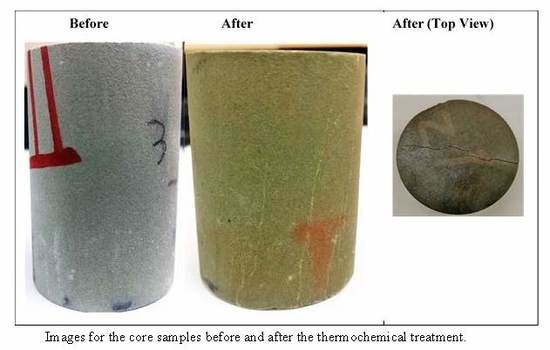Gas Production from Gas Condensate Reservoirs Using Sustainable Environmentally Friendly Chemicals
Abstract
1. Introduction
2. Methodology
3. Results and Discussion
3.1. Batch Chemical Injection
3.2. Cyclic Injection of Thermochemical Fluids
3.3. Continuous Thermochemical Injection
3.4. Capillary Pressure Enhancement
3.5. Gas Production Improvement
4. Conclusions
Author Contributions
Funding
Acknowledgments
Conflicts of Interest
References
- Guo, K.; Zhang, B.; Aleklett, K.; Höök, M. Production patterns of Eagle Ford shale gas: Decline curve analysis using 1084 wells. Sustainability 2016, 8, 973. [Google Scholar] [CrossRef]
- Liu, H.; Li, J. The US Shale Gas Revolution and Its Externality on Crude Oil Prices: A Counterfactual Analysis. Sustainability 2018, 10, 697. [Google Scholar]
- Xiao, J.; Wang, X.; Wang, R. Research on Factors Affecting the Optimal Exploitation of Natural Gas Resources in China. Sustainability 2016, 8, 435. [Google Scholar] [CrossRef]
- Bennion, D.B.; Bietz, R.F.; Thomas, F.B.; Cimolai, M.P. Reductions in the productivity of oil and low permeability gas reservoirs due to aqueous phase trapping. J. Can. Pet. Technol. 1994, 33. [Google Scholar] [CrossRef]
- Bennion, D.B.; Thomas, F.B.; Bietz, R.F. Low Permeability Gas Reservoirs: Problems, Opportunities and Solutions for Drilling, Completion, Stimulation and Production. In Proceedings of the SPE Gas Technology Symposium, Calgary, AB, Canada, 28 April–1 May 1996. SPE 35577. [Google Scholar]
- Fairhurst, D.L.; Indriati, S.; Reynolds, B.W.; Lewis, J.W.; Holcomb, M.W.; Starr, F.F. Advanced technology completion strategies for marginal tight gas sand reservoirs: A production optimization case study in South Texas. In Proceedings of the SPE Annual Technical Conference and Exhibition, Anaheim, CA, USA, 1–14 November 2007. SPE 109863. [Google Scholar]
- Ghahri, P.; Jamiolahmadi, M.; Alatefi, E.; Wilkinson, D.; Dehkordi, F.S.; Hamidi, H. A new and simple model for the prediction of horizontal well productivity in gas condensate reservoirs. Fuel 2018, 223, 431–450. [Google Scholar] [CrossRef]
- Miller, N.; Nasrabadi, H.; Zhu, D. On application of horizontal wells to reduce condensate blockage in gas condensate reservoirs. In Proceedings of the International Oil and Gas Conference and Exhibition in China, Beijing, China, 8–10 June 2010. SPE-130996-MS. [Google Scholar]
- Feng, X.; Ma, F.; Zhao, H.; Liu, G.; Guo, J. Gas Multiple Flow Mechanisms and Apparent Permeability Evaluation in Shale Reservoirs. Sustainability 2019, 11, 2114. [Google Scholar] [CrossRef]
- Wu, X.; Xia, J.; Guan, B.; Yan, X.; Zou, L.; Liu, P.; Yang, L.; Hong, S.; Hu, S. Water Availability Assessment of Shale Gas Production in the Weiyuan Play, China. Sustainability 2019, 11, 940. [Google Scholar] [CrossRef]
- Franco, C.A.; Solares, J.R.; Asiri, K.S.; Shammari, N.; Alabbad, E.A.; Gomez, A.; Antonio, F. Optimization of conventional acid jobs and the historical trend leading to multi-stage acid fracturing stimulation to increase gas-condensate productivity in carbonate reservoirs in saudi Arabia. In Proceedings of the SPE Middle East Oil and Gas Show and Conference, Manama, Bahrain, 25–28 September 2011. [Google Scholar]
- EPA. Hydraulic Fracturing for Oil and Gas: Impacts from the Hydraulic Fracturing Water Cycle on Drinking Water Resources in the United States, Executive Summary; EPA: Washington, DC, USA, 2018. [Google Scholar]
- Xu, J.; Zhai, C.; Qin, L. Mechanism and application of pulse hydraulic fracturing in improving drainage of coalbed methane. J. Nat. Gas Sci. Eng. 2017, 40, 79–90. [Google Scholar] [CrossRef]
- Mustafa, A.; Tariq, Z.; Abdulraheem, A.; Mahmoud, M.; Al Nakhli, A.; BaTaweel, M. Increasing stimulated reservoir volume srv in unconventional reservoirs: microstructural and rock mechanical study. In Proceedings of the Abu Dhabi International Petroleum Exhibition & Conference, Abu Dhabi, UAE, 12–15 November 2018. [Google Scholar]
- Page, J.C.; Miskimins, J.L. A comparison of hydraulic and propellant fracture propagation in a shale gas reservoir. In Proceedings of the Canadian International Petroleum Conference, Calgary, AB, Canada, 17–19 June 2008. [Google Scholar]
- Wu, J.J.; Liu, L.C.; Zhao, G.H.; Chu, X.S. Research and exploration of high energy gas fracturing stimulation integrated technology in Chinese shale gas reservoir. Adv. Mater. Res. 2012, 524, 1532–1536. [Google Scholar] [CrossRef]
- Al-Nakhli, A.R.; Abass, H.; Kwak, H.T.; Al-Badairy, H.; Al-Ajwad, H.A.; Al-Harith, A.; Al-Otaibi, A. Overcoming unconventional gas challenges by creating synthetic sweetspot and increasing drainage area. In Proceedings of the SPE Middle East Oil and Gas Show and Conference, Manama, Bahrain, 10–13 March 2013. [Google Scholar]
- Al-Nakhli, A.R.; Sukkar, L.A.; Arukhe, J.; Mulhem, A.; Mohannad, A.; Ayub, M.; Arifin, M. In-Situ steam generation a new technology application for heavy oil production. In Proceedings of the SPE Heavy Oil Conference and Exhibition; SPE 184118, presented at the SPE Heavy Oil Conference and Exhibition, Kuwait City, Kuwait, 6–8 December 2016. [Google Scholar]
- Castiblanco, R.; Ibrahim, E.G.; Moiseenkov, A.; Waili, I.H.; Niyadi, F.; ALRamidhi, Y.; Al Farei, I.; Nabhani, Y.; Lukmanov, R.B.; Al-Hashemi, M.; et al. Evaluation of hydraulic fracturing effectiveness by combined analysis of spectral noise logging and high precision temperature logging data and subsequent numerical temperature modelling. In Proceedings of the SPE International Hydraulic Fracturing Technology Conference and Exhibition, Muscat, Oman, 16–18 October 2018. [Google Scholar]
- Zhang, P.; Lu, S.; Li, J.; Chen, C.; Xue, H.; Zhang, J. Petrophysical characterization of oil-bearing shales by low-field nuclear magnetic resonance (NMR). Mar. Pet. Geol. 2018, 89, 775–785. [Google Scholar] [CrossRef]
- Sun, T.; Yan, W.; Wang, H.; Golsanami, N.; Zhang, L. Developing a new NMR-based permeability model for fractured carbonate gas reservoirs. J. Nat. Gas Sci. Eng. 2016, 35, 906–919. [Google Scholar] [CrossRef]
- Lewis, R.; Singer, P.; Jiang, T.; Rylander, E.; Sinclair, S.; Mclin, R.H. NMR T2 distributions in the eagle ford shale: reflections on pore size. In Proceedings of the SPE Unconventional Resources Conference-USA, Woodlands, TX, USA, 10–12 April 2013. [Google Scholar]
- Morriss, C.; Rossini, D.; Straley, C.; Tutunjian, P.; Vinegar, H. Core analysis by low-field NMR. Log Anal. 1997, 38, 84–95. [Google Scholar]
- Dejam, M. Advective-diffusive-reactive solute transport due to non-Newtonian fluid flows in a fracture surrounded by a tight porous medium. Int. J. Heat Mass Transf. 2019, 128, 1307–1321. [Google Scholar] [CrossRef]
- Dejam, M.; Hassanzadeh, H.; Chen, Z. Semi-analytical solution for pressure transient analysis of a hydraulically fractured vertical well in a bounded dual-porosity reservoir. J. Hydrol. 2018, 565, 289–301. [Google Scholar] [CrossRef]
- Hassan, A.M.; Mahmoud, M.A.; Al-Majed, A.A.; Elkatatny, S.; Al-Nakhli, A.R.; Bataweel, M.A. Novel Technique to Eliminate Gas Condensation in Gas Condensate Reservoirs Using Thermochemical Fluids. Energy Fuels 2018, 32, 12843–12850. [Google Scholar] [CrossRef]
- Al-Nakhli, A.; Mahmoud, M.; Al-Badairy, H.; Alqam, M. Advanced study of pore structure and mechanical property change of tight sand due to thermochemical treatment. In Proceedings of the International Petroleum Technology Conference, Beijing, China, 26–28 March 2019. [Google Scholar]
- Alghamdi, A.H.A. Experimental and Theoretical Study of Surfactant-Based Acid Diverting Materials; Texas A&M University: College Station, TX, USA, 2010. [Google Scholar]
- Sayed, M.A.; Al-Muntasheri, G.A. Mitigation of the effects of condensate banking: A critical review. SPE Prod. Oper. 2016, 31, 85–102. [Google Scholar] [CrossRef]
- Hassan, A.M.; Mahmoud, M.A.; Al-Majed, A.A.; Al-Nakhli, A.R.; Bataweel, M.A.; Elkatatny, S. Mitigation of Condensate Banking Using Thermochemical Treatment: Experimental and Analytical Study. Energies 2019, 12, 800. [Google Scholar] [CrossRef]
- Corey, A.T. The interrelation between gas and oil relative permeabilities. Prod. Mon. 1954, 19, 38–41. [Google Scholar]
- Ibrahim, M.N.M. Two-Phase Relative Permeability Prediction Using a Linear Regression Model. Ph.D. Thesis, University of Missouri-Rolla, Rolla, MO, USA, 1999. [Google Scholar]
- Hassan, A.; Mahmoud, M.; Al-Majed, A.; Alawi, M.B.; Elkatatny, S.; BaTaweel, M.; Al-Nakhli, A. Gas condensate treatment: A critical review of materials, methods, field applications, and new solutions. J. Pet. Sci. Eng. 2019, 177, 602–613. [Google Scholar] [CrossRef]
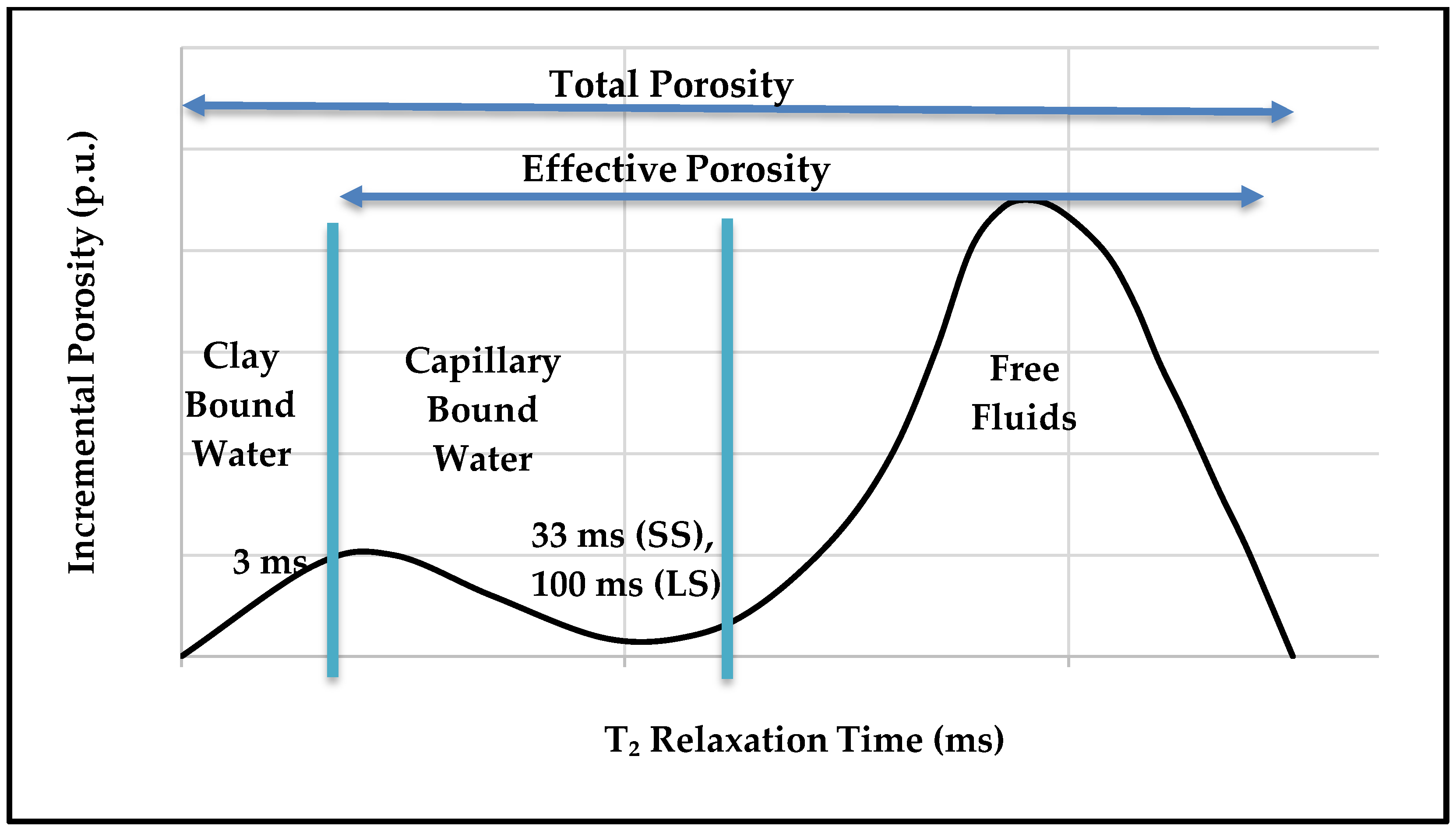
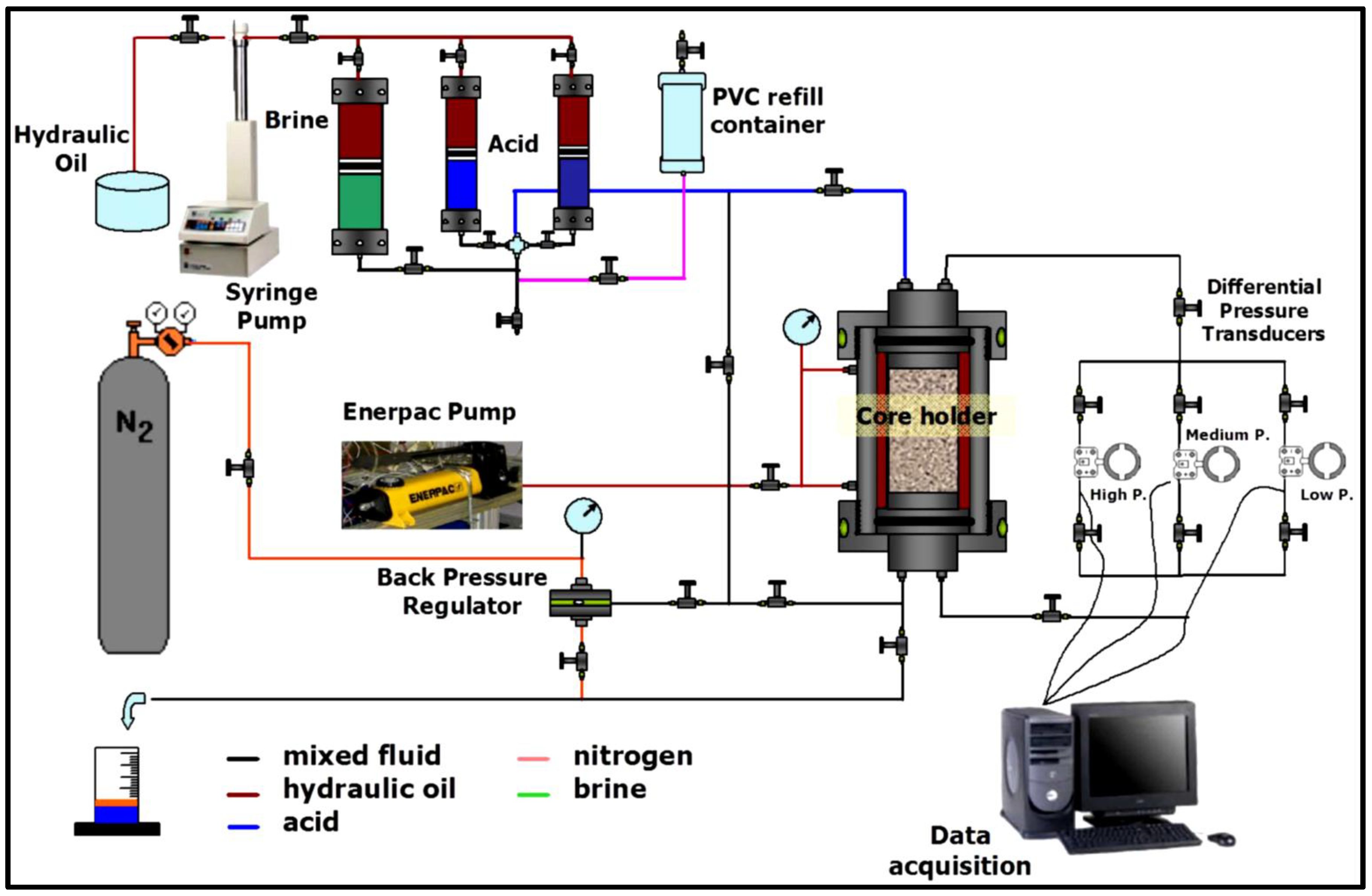
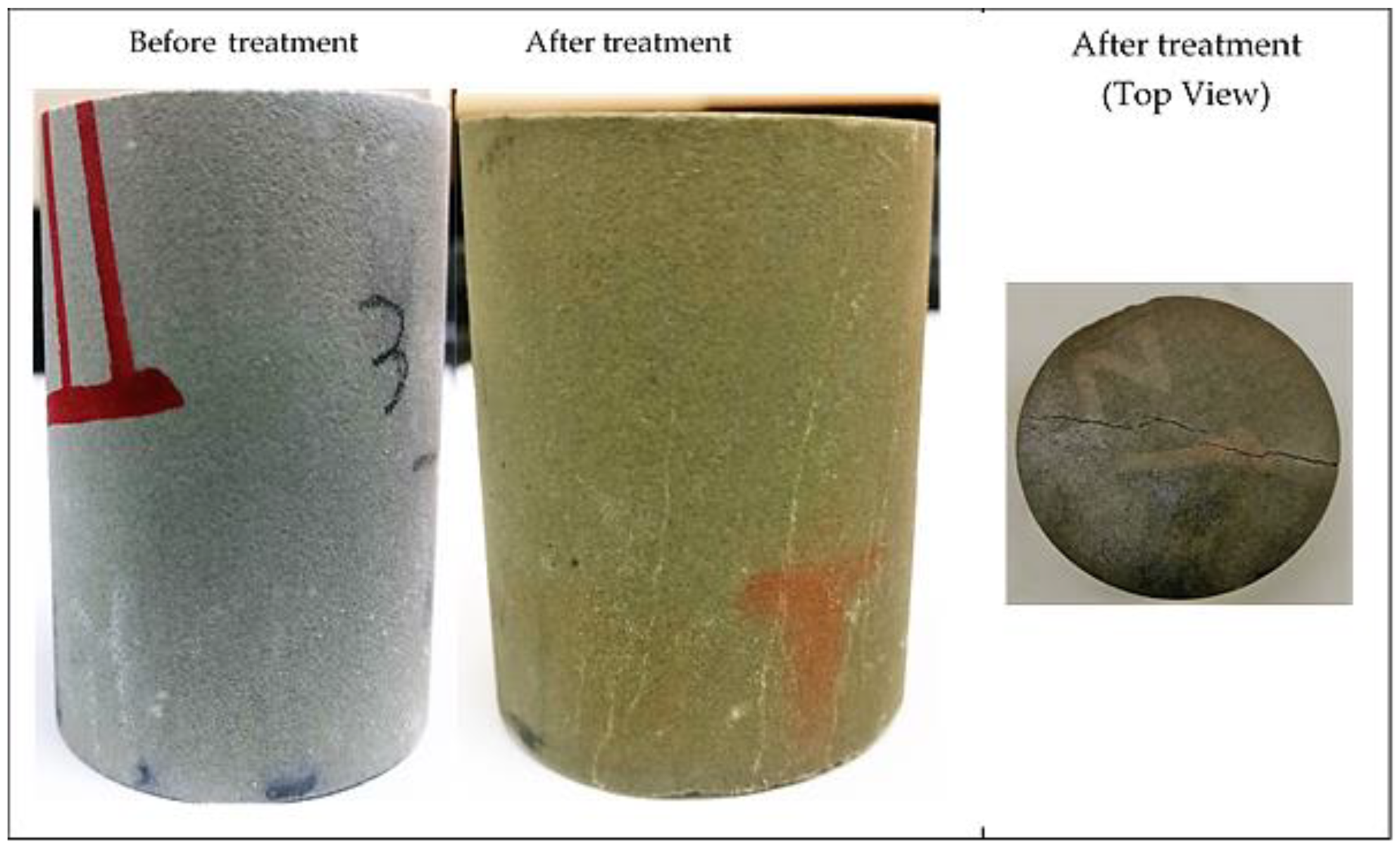
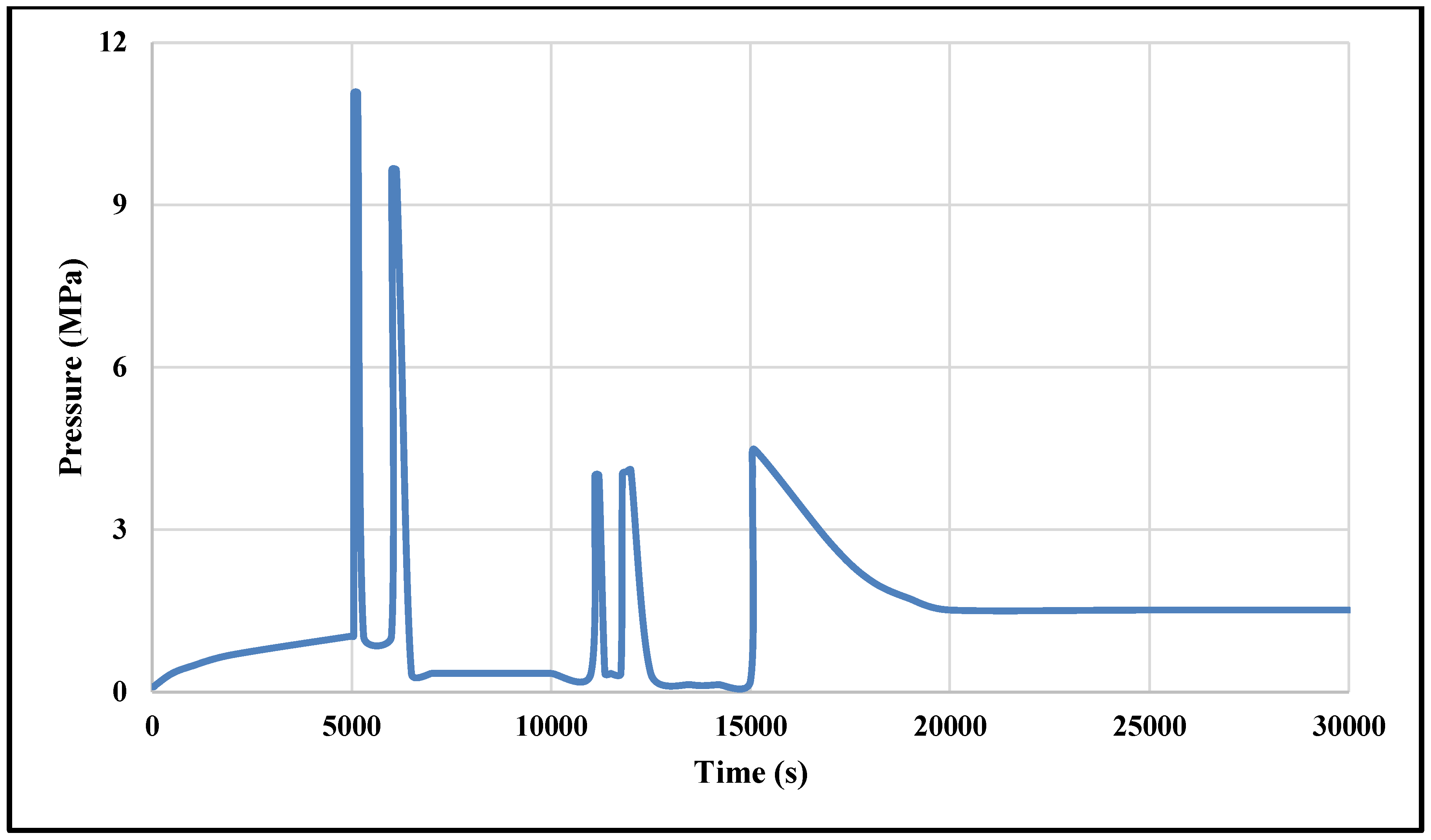
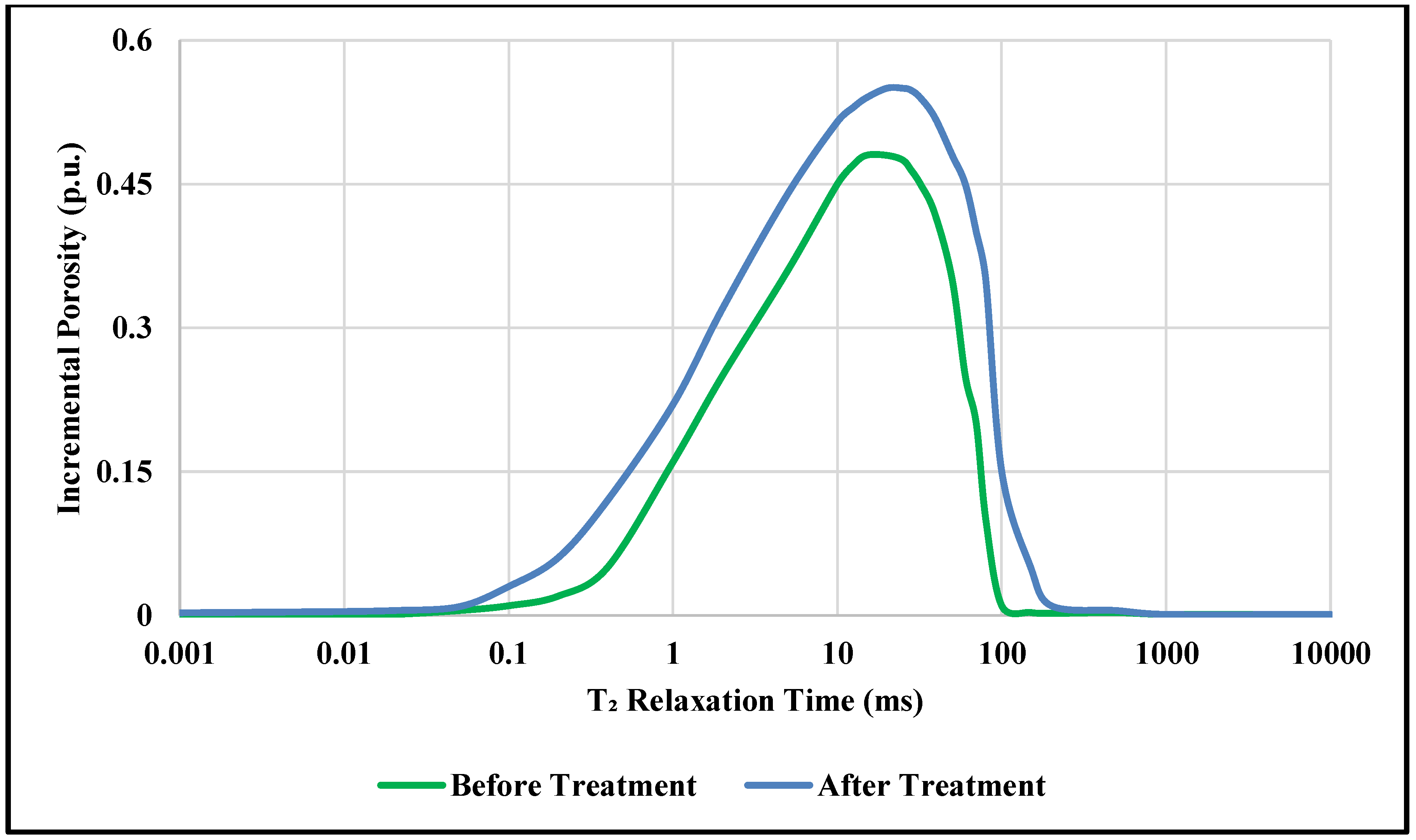
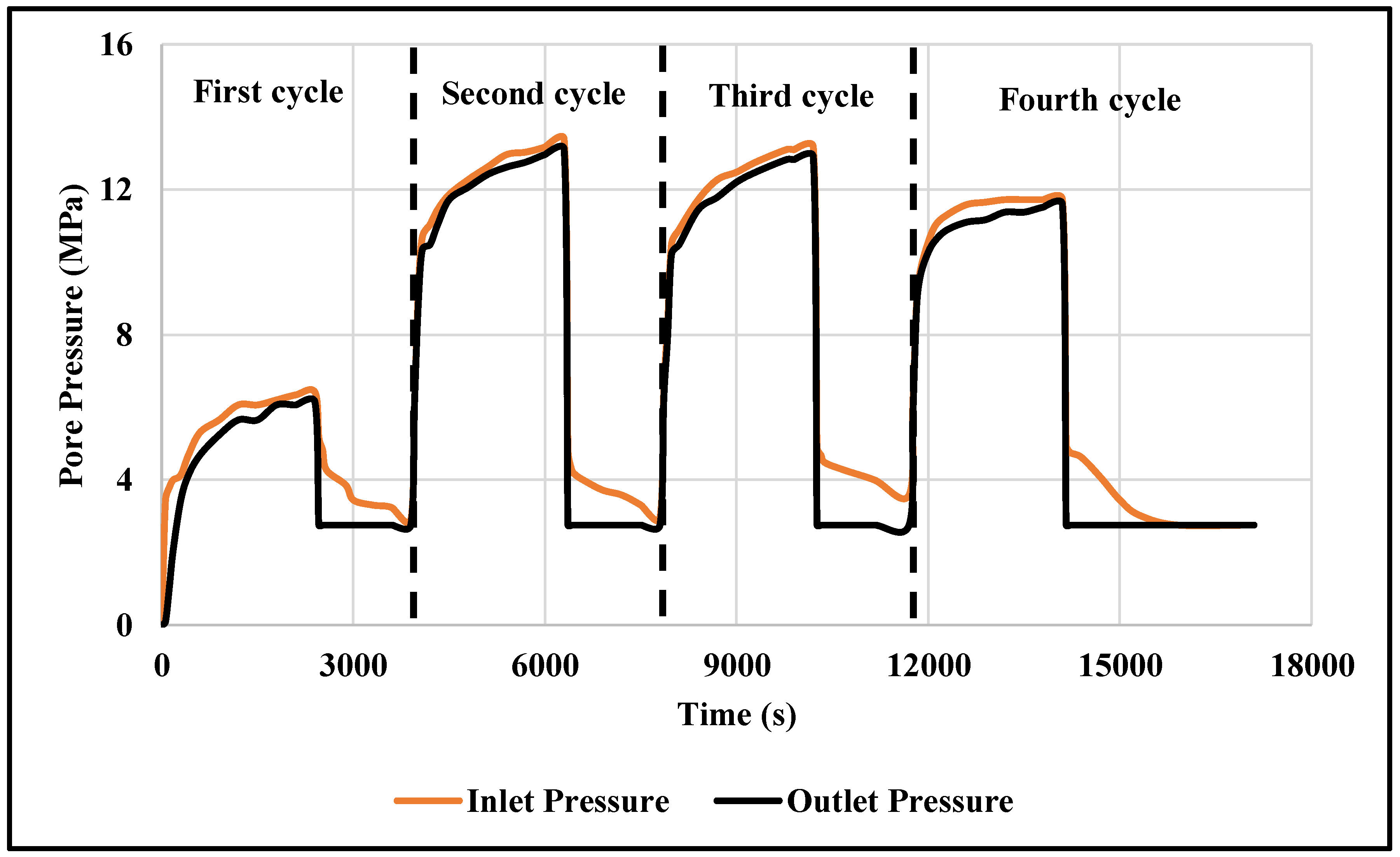
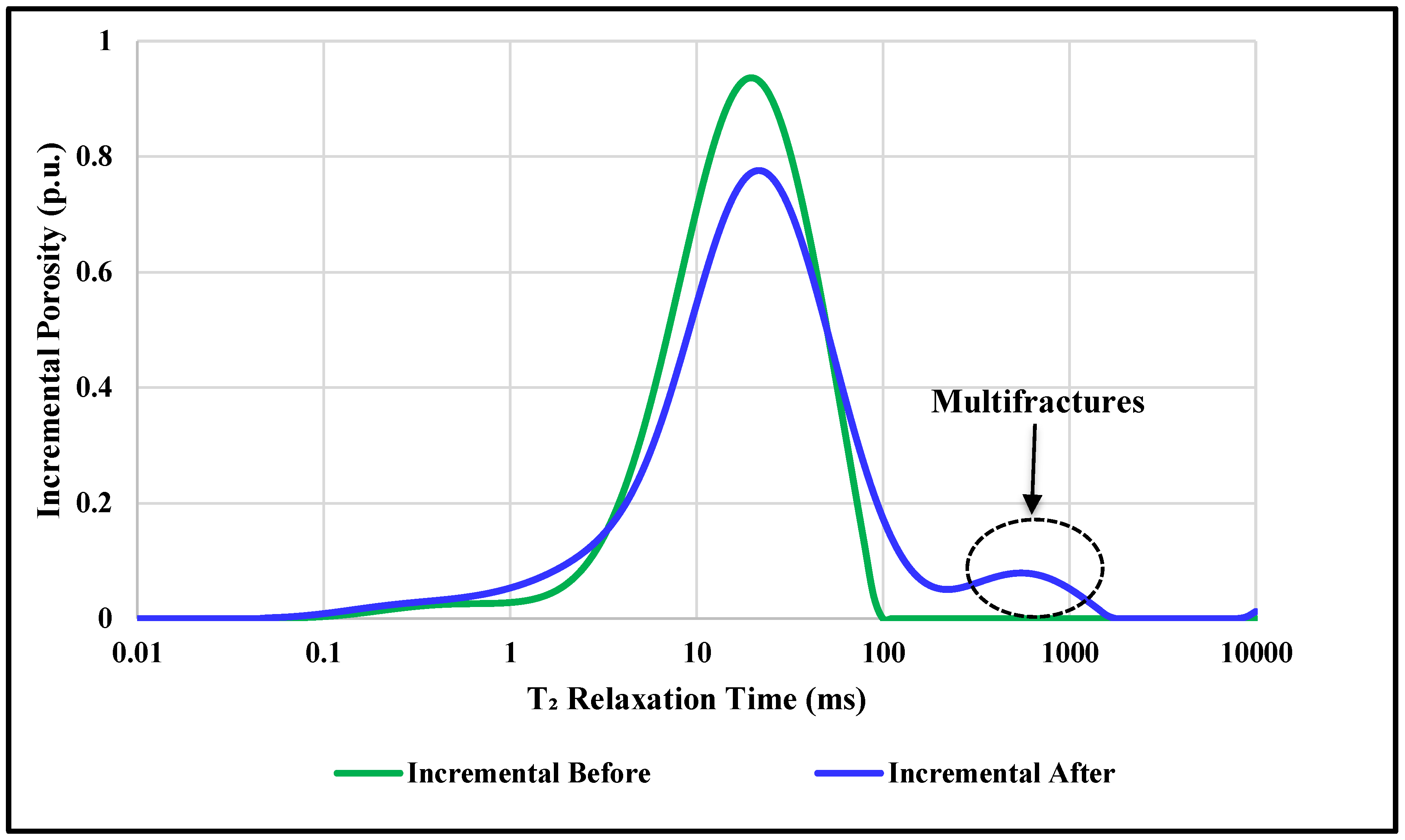
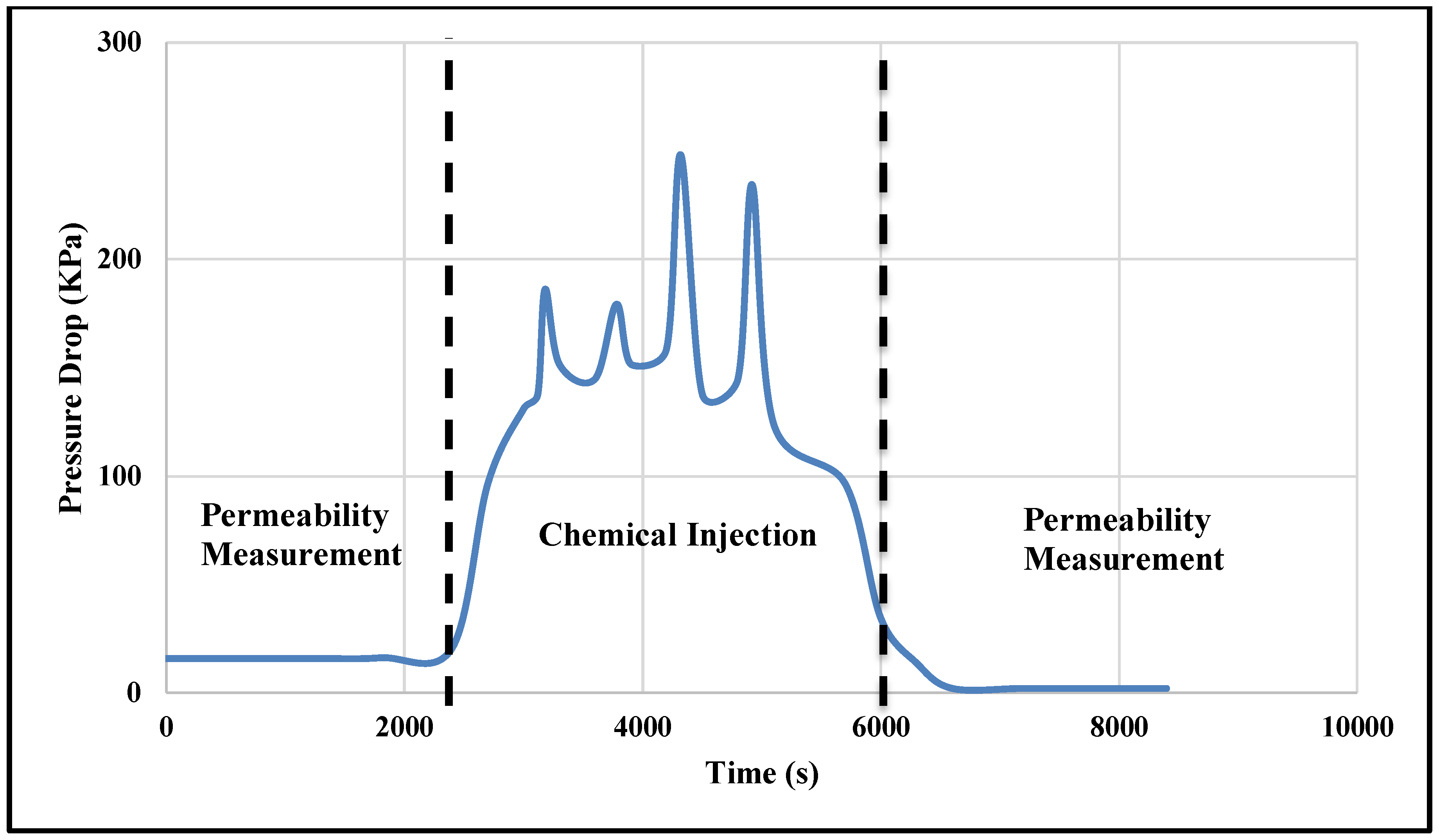
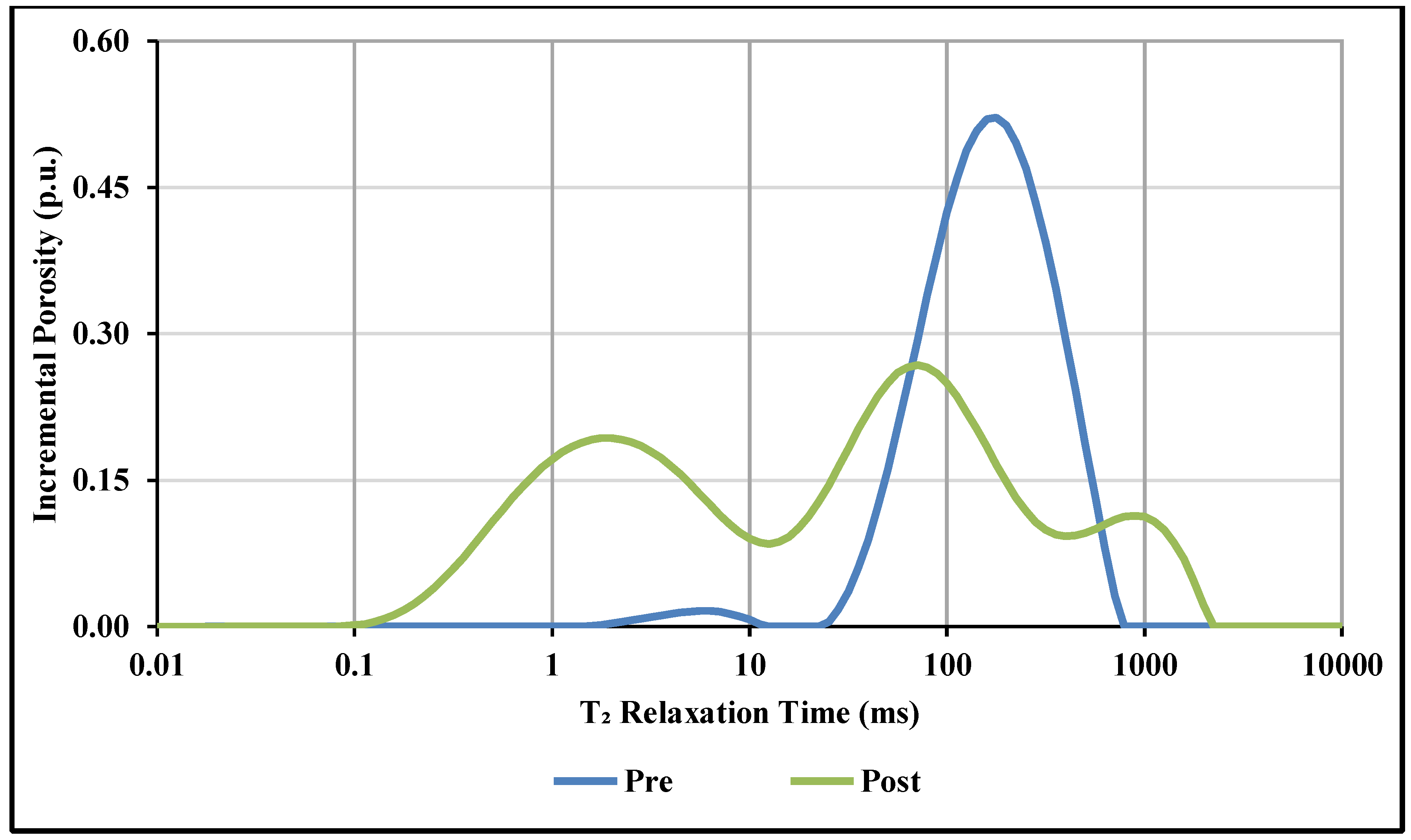
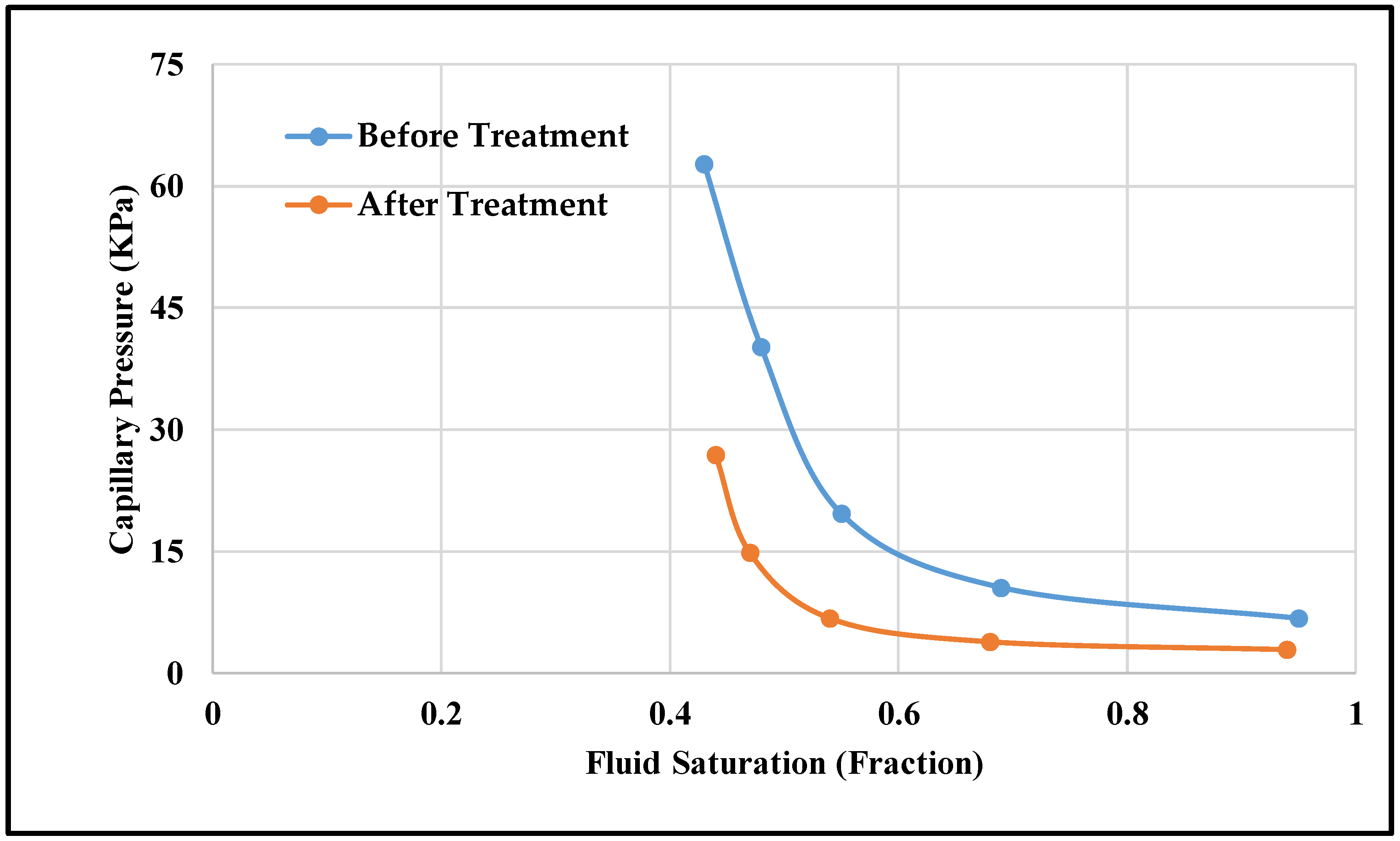
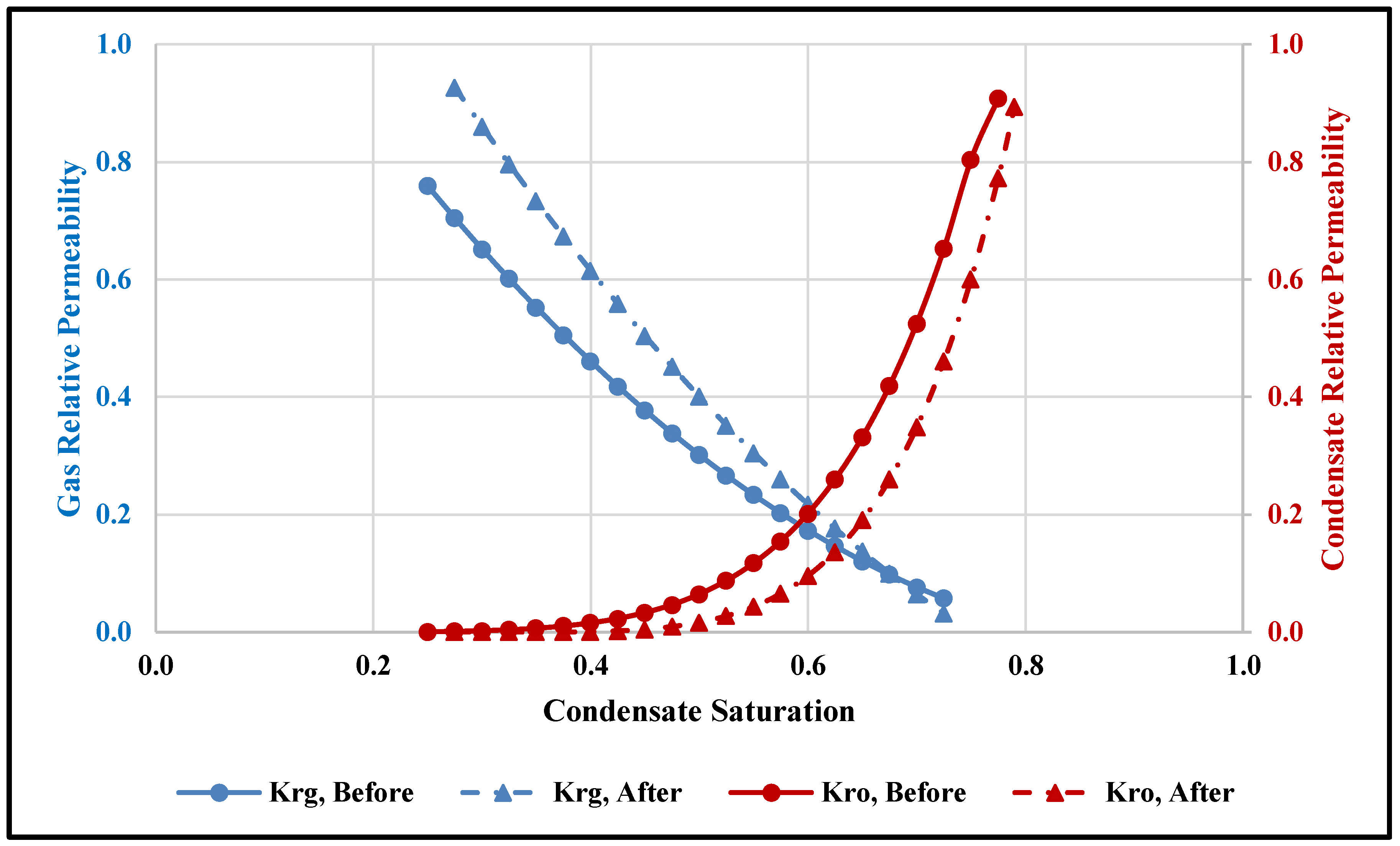
| Sample ID | Diameter (cm) | Length (cm) | Bulk Volume (ml) | Pore Volume (ml) | Porosity (%) | Absolute Permeability (mD) |
|---|---|---|---|---|---|---|
| 1 | 3.81 | 2.54 | 28.95 | 4.61 | 15.93 | 0.900 |
| 2 | 3.81 | 5.179 | 58.374 | 8.067 | 13.82 | 1.096 |
| 3 | 3.81 | 4.5 | 51.278 | 10.00 | 19.5 | 1.21 |
© 2019 by the authors. Licensee MDPI, Basel, Switzerland. This article is an open access article distributed under the terms and conditions of the Creative Commons Attribution (CC BY) license (http://creativecommons.org/licenses/by/4.0/).
Share and Cite
Hassan, A.M.; Mahmoud, M.A.; Al-Majed, A.A.; Al-Shehri, D.; Al-Nakhli, A.R.; Bataweel, M.A. Gas Production from Gas Condensate Reservoirs Using Sustainable Environmentally Friendly Chemicals. Sustainability 2019, 11, 2838. https://doi.org/10.3390/su11102838
Hassan AM, Mahmoud MA, Al-Majed AA, Al-Shehri D, Al-Nakhli AR, Bataweel MA. Gas Production from Gas Condensate Reservoirs Using Sustainable Environmentally Friendly Chemicals. Sustainability. 2019; 11(10):2838. https://doi.org/10.3390/su11102838
Chicago/Turabian StyleHassan, Amjed M., Mohamed A. Mahmoud, Abdulaziz A. Al-Majed, Dhafer Al-Shehri, Ayman R. Al-Nakhli, and Mohammed A. Bataweel. 2019. "Gas Production from Gas Condensate Reservoirs Using Sustainable Environmentally Friendly Chemicals" Sustainability 11, no. 10: 2838. https://doi.org/10.3390/su11102838
APA StyleHassan, A. M., Mahmoud, M. A., Al-Majed, A. A., Al-Shehri, D., Al-Nakhli, A. R., & Bataweel, M. A. (2019). Gas Production from Gas Condensate Reservoirs Using Sustainable Environmentally Friendly Chemicals. Sustainability, 11(10), 2838. https://doi.org/10.3390/su11102838





